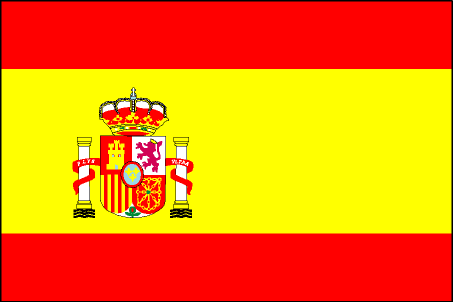The son of a police magistrate, Ruggero Leoncavallo was born in Naples on 23 April 1857 and educated at the city's Conservatorio San Pietro a Majella. (The date 8 March 1857 or 1858, given for his birth in some older histories of music, is incorrect.). After some years spent teaching and in ineffective attempts to obtain the production of more than one opera, he saw the enormous success of Pietro Mascagni's Cavalleria rusticana in 1890, and he wasted no time in producing his own verismo hit, Pagliacci. (According to Leoncavallo, the plot of this work had a real-life origin: he claimed it derived from a murder trial over which his father had presided.).
Pagliacci was performed in Milan in 1892 with immediate success; today it is the only work by Leoncavallo in the standard operatic repertory. Its most famous aria Vesti la giubba ("Put on the greasepaint" or, in the better-known older translation, "On with the motley") was recorded by Enrico Caruso and laid claim to being the world's first record to sell a million copies (although this is probably a total of Caruso's various versions of it made in 1902, 1904 and 1907).
The next year his I Medici was also produced in Milan, but neither it nor Chatterton (1896)—both early works—obtained much lasting favour. Much of Chatterton, however, was recorded by the Gramophone Company (later HMV) as early as 1908, and remastered on CD almost 100 years later by Marston Records.
It was not until Leoncavallo's La bohème was performed in 1897 in Venice that his talent obtained public confirmation. However, it was outshone by Puccini's opera of the same name and on the same subject, which was premiered in 1896. Two tenor arias from Leoncavallo's version are still occasionally performed, especially in Italy. Subsequent operas by Leoncavallo were Zazà (1900) (the opera of Geraldine Farrar's famous farewell performance at the Met, and Der Roland von Berlin (1904). He had a brief success with Gli zingari which premiered in Italian in London in 1912, with a long run at the Hippodrome Theatre. Gli zingari also reached the United States but soon disappeared from the repertoire.
After a series of operettas, Leoncavallo tried for one last serious effort (Edipo Re), but he died before he could finish the orchestration, which was completed by Giovanni Pennacchio. From the 1970s the opera has had a number of revivals, both as concert performances (including Rome 1972, Amsterdam 1977 and Vienna 1998) as well as a fully staged production in Turin in 2002. In Edipo Re (a short one act work) the composer uses exactly the same melody for the final scene Miei poveri fior, per voi non più sole... (with the blinded Edipo) as he had for the Act IV Soprano aria from Der Roland von Berlin. It has been assumed (see The New Grove Dictionary of Opera) that Leoncavallo left the opera more or less complete (except for the orchestration), but Pennacchio may have had to do more and may have 'filled in the gaps' using Leoncavallo's earlier music.[8] The libretto for Edipo Re was written by Giovacchino Forzano, who also wrote Il piccolo Marat for Pietro Mascagni and two of the one-act operas for Puccini's Il trittico.
Little or nothing from Leoncavallo's other operas is heard today, but the baritone arias from Zazà were great concert and recording favourites among baritones and Zazà as a whole is sometimes revived, as is his La bohème. The tenor arias from La bohème remain recording favorites.
Leoncavallo also composed songs, most famously Mattinata, which he wrote for the Gramophone Company (which became HMV) with Caruso in mind. On 8 April 1904, Leoncavallo accompanied Caruso at the piano as they recorded the song.
Leoncavallo was the librettist for most of his own operas. Many considered him the greatest Italian librettist of his time after Boito. Among Leoncavallo's libretti for other composers is his contribution to the libretto for Puccini's Manon Lescaut.
Ruggero Leoncavallo died in Montecatini Terme, Tuscany, on 9 August 1919.
skip to main |
skip to sidebar
Find and play easy piano sheet music, music scores specially selected for piano beginners.
COMPOSERS
OTHER CATEGORIES
PIANO SHEET MUSIC IN YOUR EMAIL
LATEST PIANO SHEETS
Tags: bach piano, beethoven piano, beginner piano,buy piano, buy sheet music, cello sheet,chord sheet, christian sheet music, christmas piano, christmas sheet, classical piano, classical sheet, coldplay sheet, digital sheet music, download sheet music, downloadable sheet music,easy piano, easy sheet, free piano, free piano sheet music, free piano sheets, free sheet, free sheet piano, guitar sheet, guitar sheet music, happy birthday sheet, jazz piano, jazz sheet, learn piano, mad world piano, mozart piano, music sheet, music sheet piano, paino sheet, piano, piano chord, piano chords, piano cover, piano for sale, piano guitar, piano instrumental, piano keyboard, piano lesson, piano lessons, piano midi, piano music, piano music sheets, piano notes, piano pieces, piano price, piano price, piano prices, piano printable, piano sales, piano score, piano scores, piano sheet music, piano sheetmusic, piano solo, piano sonata, piano song, piano store, piano tab, piano tabs, piano violin, piano vocal, piano voice, popular piano, popular sheet, print sheet, printable sheet, printable sheet music, sheet, sheet flute, sheet keyboard, sheet music, sheet music downloads, sheet music for piano, sheet music online, sheet music piano download, sheet notes, sheet piano, sheet song, sheet songs, sheet trumpet, sheet violin, sheets, sheets music, sheets piano, solo piano, song sheet piano, songs piano, the piano, the piano sheet, trombone sheet, unfaithful piano, violin sheet music, vocal piano, vocal sheet pianos





No comments:
Post a Comment